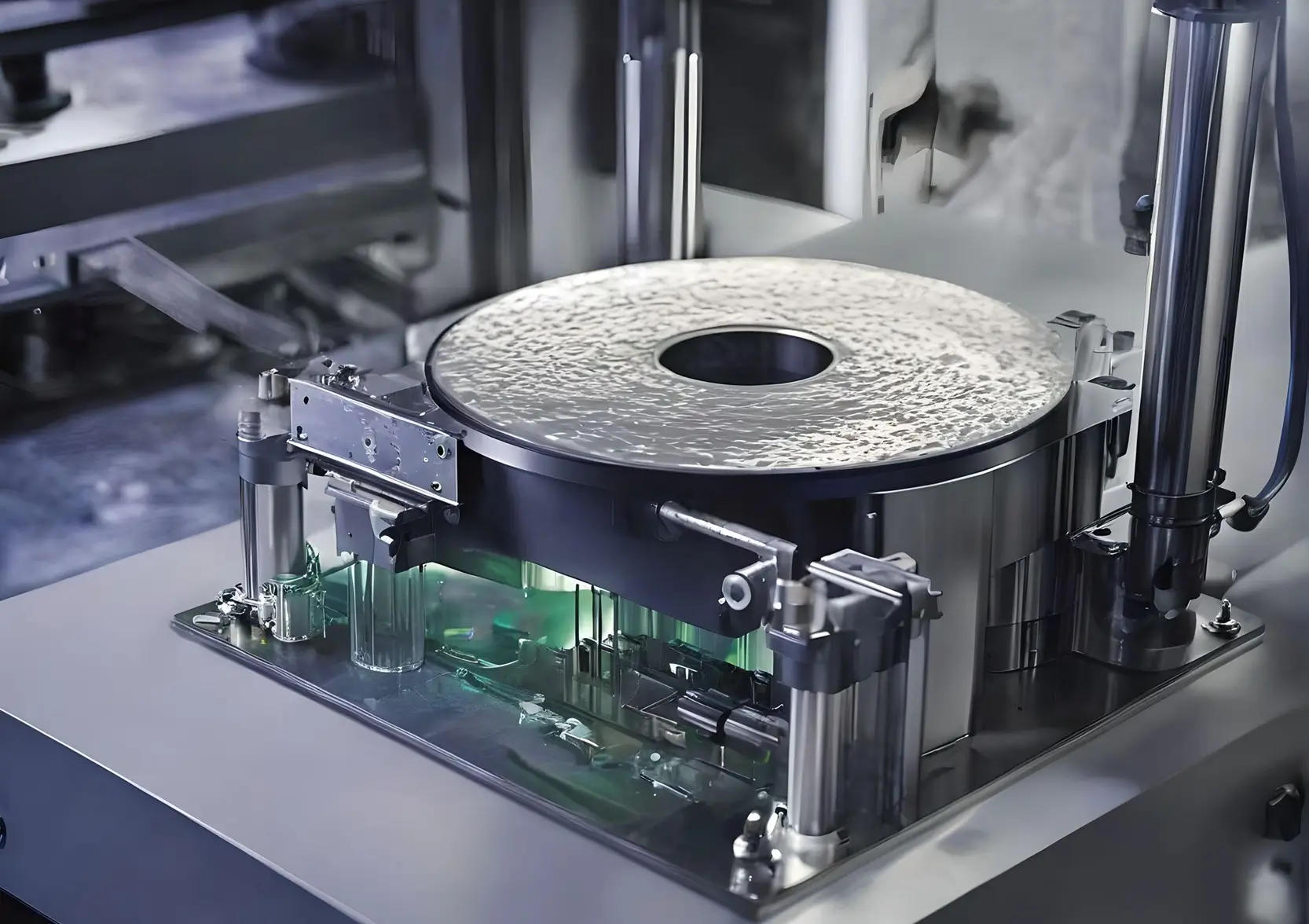
Bose-Einstein Condensate (BEC), a quantum state of matter achieved at temperatures approaching absolute zero, resides at the crossroads of quantum physics and material science. The formation of BEC unfolds in ultra-cold environments, where a sparse gas of bosonic particles, frequently alkali atoms like rubidium or sodium, undergo cooling to temperatures near absolute zero. In this extreme cold, particles’ individual quantum wave functions converge, giving rise to a collective quantum state where particles shed their distinct identities and coalesce into a unified entity.
Satyendra Nath Bose and Albert Einstein laid down the theoretical foundations of BEC in the early 20th century. However, it wasn’t until 1995 that Eric Cornell, Carl Wieman, and Wolfgang Ketterle achieved the experimental realization of BEC in the laboratory. Their success hinged on a nuanced combination of laser and evaporative cooling techniques, marking a pivotal moment in exploring quantum phenomena in controlled settings.
BEC Properties and Applications
BEC stands as a quantum state of matter, characterized by unique properties with profound implications for powder dynamics and behavior. Among its distinctive features, BECs showcase superfluidity—a phenomenon where particles flow without friction, even at extremely low temperatures. This property holds promise for applications in aerospace and materials science, offering insights into fluid dynamics that could lead to innovative solutions and materials.
Another remarkable property of BECs is their ability to tunnel through potential barriers, a process forbidden in classical physics. This property, known as quantum tunneling, could be used to develop new materials and devices that exploit the unique properties of quantum mechanics. BECs can display quantum entanglement, a phenomenon where two or more particles become inseparably linked, and changes in the state of one particle instantly affect the state of the other. This property has potential applications in quantum computing, where entangled particles could be used as qubits, capable of existing in both states (0 and 1) simultaneously.
BECs also exhibit unique optical properties, leading to their occasional nickname ‘liquid light.’ This term highlights the fascinating behavior of BEC, where particles behave collectively and interact with light in distinctive ways. The versatility of BECs extends to serving as customizable quantum laboratories, facilitating the study and simulation of various quantum phenomena like superfluidity, quantum tunneling, and quantum entanglement. These simulations contribute to a deeper understanding of fundamental quantum principles and aid in developing novel theories.
Quantum Behavior of Bose-Einstein Condensate Particles
In BEC, particles exhibit the intriguing phenomenon of wave-particle duality, manifesting both as discrete particles and waves. This dual nature facilitates the formation of interference patterns, a crucial aspect for precision measurements. Unlocking the potential applications of BEC relies on comprehending the quantum behavior of its particles. BEC-based interferometers, a notable application, hold the potential to detect gravitational waves—feeble disturbances in spacetime resulting from colossal cosmic events. These interferometers, leveraging BEC’s unique properties, offer unparalleled accuracy in measuring gravitational forces, contributing significantly to our understanding of the universe. The pursuit of gravitational wave detection stands as a noteworthy area of
research in the BEC field, providing an exclusive opportunity to observe and study the universe’s most potent cosmic forces. Beyond gravitational wave detection, BECs play a pivotal role in creating highly precise atomic clocks. These clocks, utilizing the frequency measurement of microwave transitions in atoms, demonstrate remarkable stability and precision. Their applications extend to timekeeping, navigation, and fundamental physics research. The unique properties of BECs, such as sensitivity to external fields and the ability to exhibit quantum phenomena, enable these atomic clocks to achieve unprecedented levels of accuracy. Moreover, BECs find utility in the development of sensitive sensors measuring gravitational, rotational, and magnetic fields. Their distinctive properties make them promising for diverse astrophysics, geophysics, and material science applications. These sensors, leveraging BEC characteristics, can detect even the subtlest
changes in these fields, contributing to advancements in various scientific and technological domains. The applications of BECs extend further into the fields of quantum computing and simulation. BECs can serve as customizable quantum laboratories, allowing researchers to study and simulate intricate quantum phenomena like superfluidity, quantum tunneling, and quantum entanglement.
These simulations offer insights into the fundamental principles of quantum mechanics, aiding in the development of novel theories. As a significant area of research, quantum simulation using BECs provides a unique opportunity to explore particle behavior in extreme quantum regimes, unraveling the underlying principles of quantum mechanics.
BEC Intersecting with Powder Technology
BEC has long captivated scientists with its applications in precision measurements, particularly through the remarkable technique of BEC-based interferometry. This method uses the wave nature of particles, and exhibits promising results in gravitational wave detection, showcasing the precise control over quantum states within BEC, and opening new avenues in fundamental physics. Surprisingly, this intriguing quantum phenomenon finds an unexpected intersection with powder technology. In the field of powder technology research, where accurate measurements of particle size, distribution, and interactions are pivotal, BEC’s unique quantum properties
could offer an innovative approach to enhanced precision. By introducing BEC-based interferometry to this domain, researchers may unlock unprecedented accuracy in characterizing powder particles at the quantum level. This convergence of BEC with powder technology marks a groundbreaking frontier in precision measurements. Specifically, the marriage of BEC-based interferometry and powder research not only holds promise for fundamental physics breakthroughs but also presents an exciting prospect for advancing particle characterization with unparalleled accuracy. Delving deeper into this intricate interplay promises new techniques that could significantly influence various scientific and industrial sectors.
Quantum Effects on Powder Behavior
The integration of BEC with powder technology provides a unique lens into the quantum behavior of particles within powders, observing phenomena like quantum tunneling and entanglement on a macroscopic scale. This perspective will expand our understanding of powder dynamics beyond the traditional scope of powder technology research. As BEC enables the observation of quantum
effects on powder particles, including the remarkable phenomenon of quantum tunneling, particles within the BEC state demonstrate an extraordinary ability to traverse potential barriers within the powder environment. This, along with entanglement, where particles become inseparably linked, showcases the transformative potential of BEC in influencing powder dynamics. Quantum tunneling allows particles to move through obstacles in a manner not
constrained by classical physics, offering unique insights into the quantum behavior of particles within powders on a microscopic scale. Together, these quantum effects open avenues for innovative applications in powder technology, pushing the boundaries of classical limitations.
A deeper exploration of these quantum effects would enrich our comprehension of powder behavior and, more importantly, unveil avenues for innovative applications. By elucidating how
BEC-induced quantum effects influence particle interactions and characteristics within powders, researchers can gain insights that extend beyond conventional approaches. This exploration not only bridges the realms of quantum physics and material science but also offers transformative possibilities for the future of powder technology. The synergy between BEC and powder technology holds promise in reshaping our manipulation and control of matter at its most fundamental level.
Bose-Einstein Condensate: Challenges and Current Research
While the fusion of BECs and powder technology holds immense promise, bridging the gap between theoretical potential and practical application presents formidable challenges. This integration brings forth specific obstacles that researchers are actively addressing with innovative approaches.
Achieving and maintaining stable BECs within powder environments poses a significant challenge. These delicate quantum systems are highly susceptible to external perturbations, including temperature fluctuations, magnetic fields, and impurities. Conventional BEC creation methods relying on ultra-cold temperatures near absolute zero (-273.15°C) encounter technical hurdles when integrated with powders operating at higher temperatures. Researchers are exploring alternative BEC creation and stabilization techniques, such as laser cooling schemes tailored for specific powder materials. Engineering robust containment and isolation systems shield BECs from external influences, and advancements in magnetic field control
technologies further enhance BEC stability within powder environments.
Another considerable challenge involves scaling BEC technology from controlled laboratory settings to industrial applications. This requires increasing the size and lifetime of BECs while minimizing energy consumption and ensuring stability under real-world conditions. Current research focuses on refining cooling and trapping methods, exploring new trap geometries and materials for improved BEC confinement, and utilizing advancements in BEC manipulation techniques like phase-contrast interferometry and atom chips for precise control and long-distance transport of quantum
systems. Contaminants within powders also pose a significant threat to BEC stability and precision. Even trace amounts of impurities can disrupt delicate quantum coherence, compromising accuracy and performance in interferometric measurements. Researchers address this challenge by developing better materials and coatings for BEC containment systems that exhibit minimal interaction with powder particles, efficiently filtering out impurities. Exploring alternative BEC creation methods, such as laser cooling of specific atomic isotopes less susceptible to contamination, holds promise for enhanced stability.
Future Implications for Powder Technology
Anticipating the future, the synergy between Bose-Einstein Condensate and powder technology holds immense promise. This convergence could revolutionize material science and manufacturing, offering enhanced precision in particle characterization and improved manufacturing processes. Furthermore, a deeper understanding of quantum effects on powder behavior may unlock new frontiers in manipulating matter at the quantum level. The potential implications of the
synergy between BEC and powder technology are vast, with key areas of impact including enhanced precision in particle characterization, improved manufacturing processes, and a profound understanding of quantum effects on powder behavior. BECs have the potential to elevate particle characterization precision in powder technology, providing insights into quantum effects on a microscopic scale. This could deepen our understanding of powder dynamics, paving the way for the development of new materials with tailored properties. Moreover, integrating BEC with powder technology may lead to advancements in manufacturing
processes, such as more efficient and precise additive manufacturing techniques. By harnessing the quantum phenomena exhibited by BECs, such as superfluidity and quantum tunneling, there is potential to manipulate and control powder materials at the quantum level, opening new frontiers in material science and manufacturing. As research progresses, the implications of BEC in powder technology continue to grow, offering a glimpse into a future where the fusion of quantum physics and powder technology transforms our understanding and manipulation of matter at its most fundamental level.




